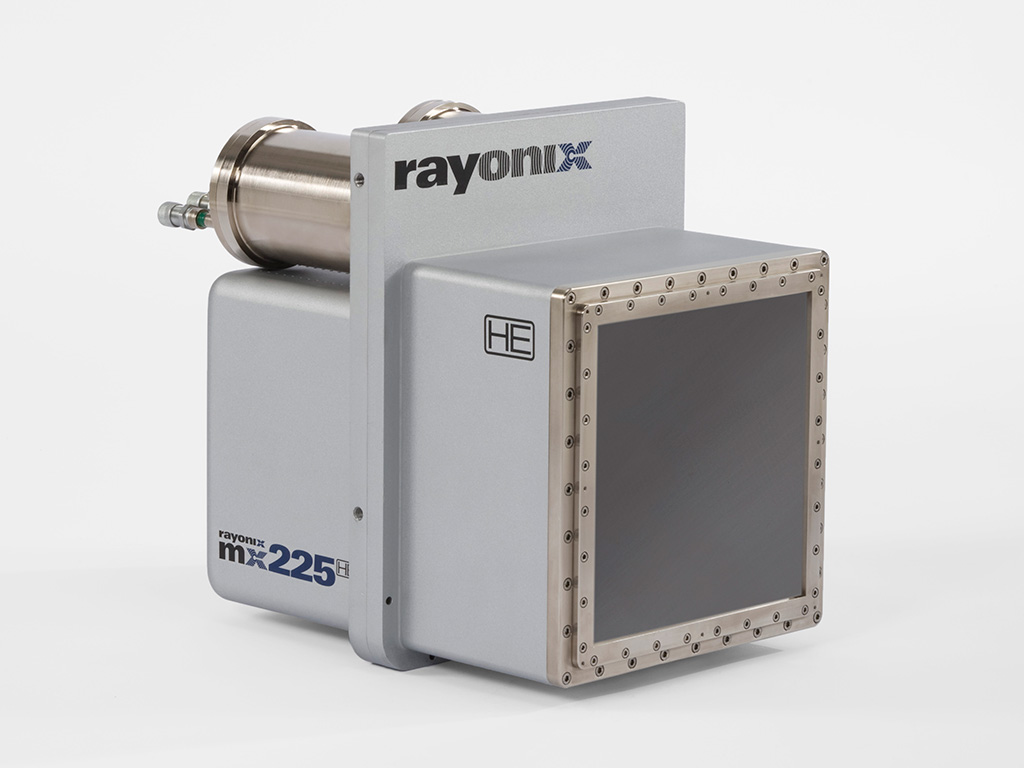Rayonix is pleased to announce the first X-ray mosaic detectors to use thinned, back-illuminated CCD chips. All of the standard MX detectors (3 x 3 225, 4 x 4 300 and 325) are available in high efficiency (HE) versions that use higher efficiency, back-illuminated CCD chips, but have the same active area and resolution.
Because back-illuminated CCDs have twice the quantum efficiency of standard front-illuminated chips, and because Rayonix produces very low noise readout electronics, our HE detectors offer 4X to 8X higher signal to noise ratio at the lowest photon counts. The fact that the back-illuminated chip looks nearly black is due to its ability to absorb incident light more efficiently. In addition, these back-illuminated CCDs offer excellent linearity, compared to other high-gain CCD options on the market that we have tested.
The MX HE series were specifically designed with several applications in mind, which require the ability to image and discriminate both weak and strong X-ray signals. These applications include protein crystallography of micro-crystals, low energy X-ray crystallography, small angle X-ray scattering (SAXS), and measurements of other weakly scattering samples, such as protein solutions and thin fibers.
Available are various configurations of FOT (fiber-optic taper) coupled modules. The MX HS series of detectors use 3 x 3, or 4 x 4 arrays of fused fiber-optic taper elements to make a very large active area. Unlike other multi-element detectors, the images produced have no gaps between the modules. Rayonix’s lifetime factory calibration is permanent and suitable for all X-ray sources.

